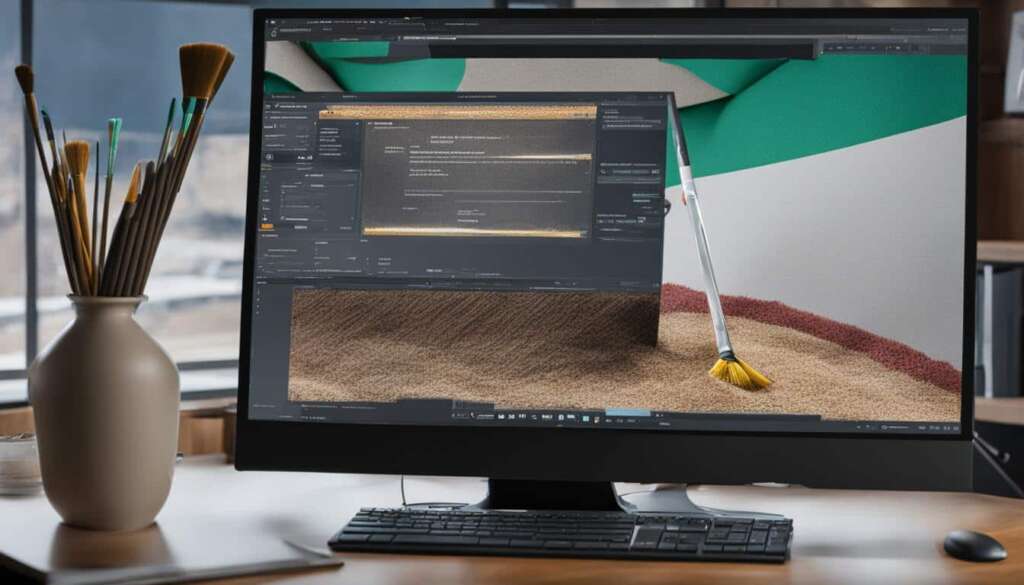Table of Contents
Welcome to our comprehensive PC startup guide, where we’ll show you how to turn on a PC efficiently. Whether you’re a tech-savvy user or a beginner, optimizing your PC’s startup can significantly improve its performance. By following a few simple steps, you can ensure a smooth and speedy PC start-up experience.
In this guide, we’ll walk you through some essential tips and tricks gathered from various sources to help you turn on your PC effectively. From changing your power settings to disabling unnecessary startup programs, we’ve got you covered.
So, let’s dive in, and explore the best practices for turning on a PC efficiently.
Section 2: Disable Programs That Run on Startup
Section 3: Go to a Previous Restore Point
Change Your Power Settings
One effective way to improve your PC’s startup time and performance is to change your power settings. By switching from the default “Power saver” plan to “High performance” or “Balanced,” you can optimize your PC’s power consumption and boost its performance. This can provide an instant performance boost and make your PC run more smoothly.
To change your power settings, follow these steps:
- Go to the Control Panel.
- Navigate to the Hardware and Sound section.
- Click on Power Options.
- From the Power Options window, select the desired power plan: High performance or Balanced.
- Apply the changes.
Changing your power settings can have a significant impact on your PC’s performance, especially during startup. It allows your computer to allocate resources more efficiently, resulting in faster boot times and improved overall performance.
| Power Plan | Performance | Power Consumption |
|---|---|---|
| Power Saver | Lowest | Very low |
| Balanced | Moderate | Moderate |
| High Performance | Highest | High |
The table above illustrates the differences between the available power plans. While the “Power Saver” plan conserves energy, it may sacrifice performance. On the other hand, the “High Performance” plan prioritizes performance over power consumption. Choosing the right power plan that suits your needs can significantly improve your PC’s startup time and overall performance.
Disable Programs That Run on Startup
Another important step in turning on a PC efficiently is to disable programs that run on startup. Many programs are configured to launch automatically when you start your PC, which can slow down its startup time and overall performance.
By using the Task Manager, you can identify and disable these unnecessary startup programs. To access the Task Manager, you can press Ctrl-Shift-Esc or right-click the lower-right corner of your screen and select Task Manager. From the Startup tab in the Task Manager, you will see a list of programs that launch at startup.
Unnecessary programs running on startup can consume valuable system resources and prolong the startup process. By disabling them, you can free up these resources and significantly improve your PC’s startup speed.
You can right-click on any program and select “Disable” to prevent it from running on startup. This will help free up system resources and improve your PC’s startup speed. It is essential to be cautious while disabling programs since some may be necessary for your PC’s operation. It is advisable to research the specific program or consult with a technical expert if you are unsure.
To give you an idea, here are examples of unnecessary programs that commonly run on startup:
- Instant messaging apps like Skype or Discord
- File-sharing programs such as Dropbox or Google Drive
- Media players like iTunes or Spotify
- Adobe Creative Cloud services
- Various manufacturer-specific software utilities
Remember that the specific programs that run on startup can vary depending on your PC’s configuration. It is always a good idea to review the list carefully and disable programs that are not essential to your daily workflow.
In the table below, you’ll find a detailed list of some common unnecessary programs that run on startup and can be safely disabled:
| Program | Description | Startup Impact |
|---|---|---|
| Skype | Video calling and messaging app | Medium |
| Dropbox | File hosting and synchronization service | Low |
| iTunes | Media player and library organizer | High |
| Adobe Creative Cloud | Suite of creative software applications | High |
| Norton Security | Antivirus and internet security program | High |
Remember that disabling unnecessary startup programs can have a significant impact on your PC’s performance and startup time. However, it is crucial to exercise caution and only disable programs that you are familiar with and confident are not needed for your daily tasks.
Go to a Previous Restore Point
If you’ve noticed a decline in your PC’s performance, don’t fret. There’s a solution that can help improve its speed and resolve any issues that may have arisen – going to a previous restore point. Windows 10 offers a built-in feature called System Restore that automatically creates restore points at specific moments in time, capturing the system’s state, including installed software, drivers, and updates.
Restoring your PC to a previous restore point allows you to revert it back to a state where it was performing optimally. To access this feature, simply search for “advanced system” in the Windows search box and click on the “View advanced system settings” option. From there, navigate to the System Protection tab and click on the System Restore button.
You’ll then be presented with a list of available restore points. Choose the one that you believe will best address the performance issues you’re experiencing, and proceed with the restoration process. It’s important to note that this process won’t affect your personal files, but it’s always advisable to back up any important data before performing a system restore.
By utilizing the system restore feature and selecting an appropriate restore point, you can effectively troubleshoot and resolve performance issues on your PC. Give it a try if you’re facing any system-related troubles, and restore your PC to its former glory.
FAQ
How can I turn on a PC efficiently?
To turn on a PC efficiently, you can follow these steps:
How can I change my power settings to optimize my PC’s performance?
To change your power settings and optimize your PC’s performance, you can do the following:
How do I disable programs that run on startup?
To disable programs that run on startup and improve your PC’s performance, you can follow these steps:
How can going to a previous restore point improve my PC’s performance?
Going to a previous restore point can help improve your PC’s performance by following these steps:












